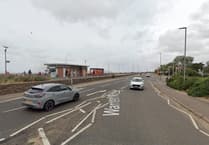THE environmental impact of Hinkley Point C will be the subject of a new planning inquiry which could be held in the next 18 months.
Around 11,000 people are currently working at the Hinkley Point C construction site near Stogursey, with this number expected to rise to 12,000 in the coming months – and the West Somerset Free Press reports this number could eventually rise to 15,000.
EDF Energy secured planning consent for the power station back in 2013, with construction beginning three years later.
The company is seeking to make a number of changes to the agreed measures, which will require the approval of the Planning Inspectorate – resulting in a new public inquiry where residents can have their say.
The new inquiry was confirmed in a recent report by Councillor Ros Wyke, Somerset Council’s portfolio holder for economic development, planning and assets.
She said: “EDF Energy is proposing to make some material (and non-material) changes to the development consent order (DCO) for the Hinkley Point C project.
EDF proposes the following DCO changes:
- Removing the need to install an acoustic fish deterrent in the Bristol Channel
- Providing ecological mitigation to counter the potential loss of fish stocks from this deterrent – taking the form of new saltmarshes near the River Parrett
- Changing the agreed interim spent fuel store from a wet store to a larger dry store
- Replacing the access control building with a new equipment storage building
- Relocating and redesigning the site’s meteorological mast
- Retaining the existing temporary electricity substation as a permanent feature, providing power to the Hinkley Point A and B facilities
- Erecting four new storage structures to house sluice gates and lifting beams
EDF held an initial round of public consultation in January and February over its proposals for new saltmarshes on the Pawlett Hams.
The plans will see the creation of more than 800 acres of saltmarsh, providing new habitats for fish and animals, improving water quality and reducing the risk of localised flooding.
The proposals will be in addition to other measures in the Bristol Channel to offset the power station’s impact, including the planting of seagrass and kelp, developing native oyster beds and removing weirs on three rivers to help migrating fish to reach their breeding grounds.
Councillor Leigh Redman, who is standing for Labour in the new Bridgwater constituency, has serious concerns about the saltmarshes proposal, including how effective it would be given the other environmental factors at play.
Mr Redman said: “According to the government’s Centre for Environment, Fisheries and Aquaculture Science, between 18 and 46 tonnes of fish could be lost a year if the acoustic fish deterrent plan is abandoned.”
Councillor Claire Sully – who is standing for the Liberal Democrats in the same constituency – has been fighting the new saltmarshes as part of the Save Pawlett Hams campaign.
Ms Sully claimed that the new nature reserve would cost up to £50m to deliver, arguing the acoustic fish deterrent was “essential” to preventing damage to the Severn estuary.





Comments
This article has no comments yet. Be the first to leave a comment.